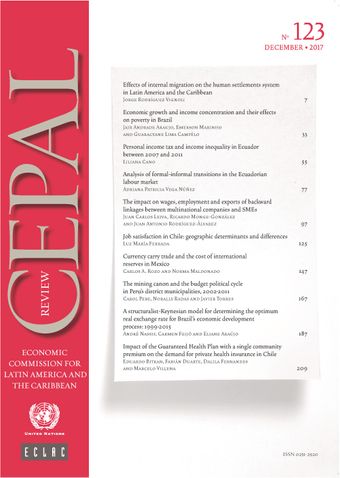-
A structuralist-Keynesian model for determining the optimum real exchange rate for Brazil’s economic development process: 1999-2015
- Source: CEPAL Review, Volume 2017, Issue 123, Dec 2017, p. 188 - 208
- Spanish
-
- 23 Sep 2018
Abstract
The “optimum” long-run real exchange rate is the rate that will efficiently channel production resources into industries that generate and diffuse productivity gains in the economy as a whole and that will thus tend to speed up and sustain the economic development process. Rather than employing conventional models, a structuralist- Keynesian model is used to demonstrate, both theoretically and empirically, that the factors influencing the path of the long-run real exchange rate and the divergence of the observed real exchange rate from the “optimum” real exchange rate in terms of economic development are accounted for by both structural and short-term macroeconomic policy variables. Econometric estimates for 1999-2015 indicate that, following a prolonged period, beginning in late 2005, during which the Brazilian currency appreciated quite steeply, the real exchange rate in Brazil reached its “optimum” level in mid-January 2016.





